A Traveller’s Guide to Exploring Scotland’s Highlands
One of the wildest, most beautiful, and unpopulated areas in Europe is right on your doorstep. Get the most out of your adventure in the Scottish Highlands with our guide.
The Scottish Highlands is home to some of the most dramatic and unspoilt scenery in Britain, boasting the Kingdom's loftiest mountains, largest lochs (lakes) and biggest National Parks.
From gazing out over the mighty Three Sisters in Glencoe to hiking Ben Nevis (the UK’s highest peak) and exploring picture-postcard castles, the Scottish Highlands possess a vast array of natural and historic wonders.
Explore Europe’s wild, rugged northwestern frontier with our guide.
How to get around Scotland
By car
Thanks to its extensive network of motorways, A, and B roads, Scotland is best explored by car. This option gives you the freedom to stop off and admire the dramatic views, or visit attractions as and when you please.
If you don't have your own car, then renting is an option.
Public transport
Scotland also has a good public transport network, with rail links between key cities. By train, you can get as far as the Kyle of Lochalsh in the west and Thurso and Wick on the northeastern tip.
Smaller towns and villages are often served by buses, in common with the rest of the UK.
The UK-wide £2 cap on bus fares is set to remain in place until December 31, 2024, making bus travel a very economical—if sometimes inconvenient—option.
Cycling
Scotland boasts around 1,620 miles of National Cycle Network routes, of which 695 are traffic-free. This, added to the quieter roads of the Highlands, makes cycling a relaxing option (notwithstanding the odd gale!).
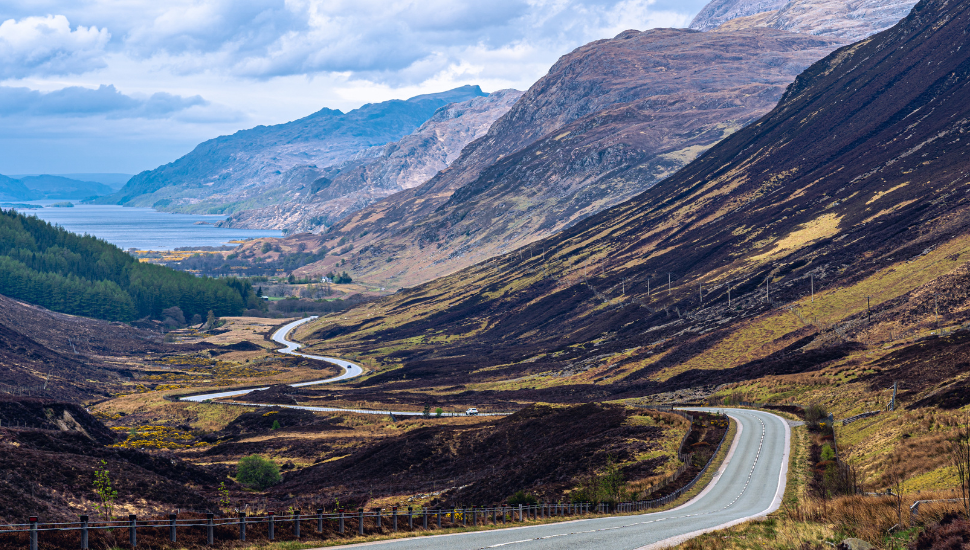
What's the best route around the Scottish Highlands?
If you’re exploring the Highlands by car, you might choose to begin in Glasgow, move up the west coast (including Loch Lomond, the Falls of Falloch, the Isle of Skye, etc.), then take the North Coast 500 across to John o' Groats, before travelling down the eastern seaboard, pit-stopping in Aberdeen and completing your adventure in Edinburgh.
You would need at least two weeks to do this route justice, such is the wealth of views, hikes, castles, stone circles and towns to enjoy.
It's important not to give yourself too tight a schedule, since you may wind up rushing past intensely beautiful scenery just to reach your accommodation in good time.
Accommodation in the Scottish Highlands
Hotels in the Scottish Highlands
As you might expect, there's a good choice of hotels in the Scottish Highlands - although booking ahead is essential, particularly during the busier summer period. You don’t want to find yourself without somewhere to stay after a long day of motoring!
But hotels aren’t the only option - several castles offer accommodation to weary travellers, including Kinraig Castle in Invergordon and Inverlochy Castle near Ben Nevis.
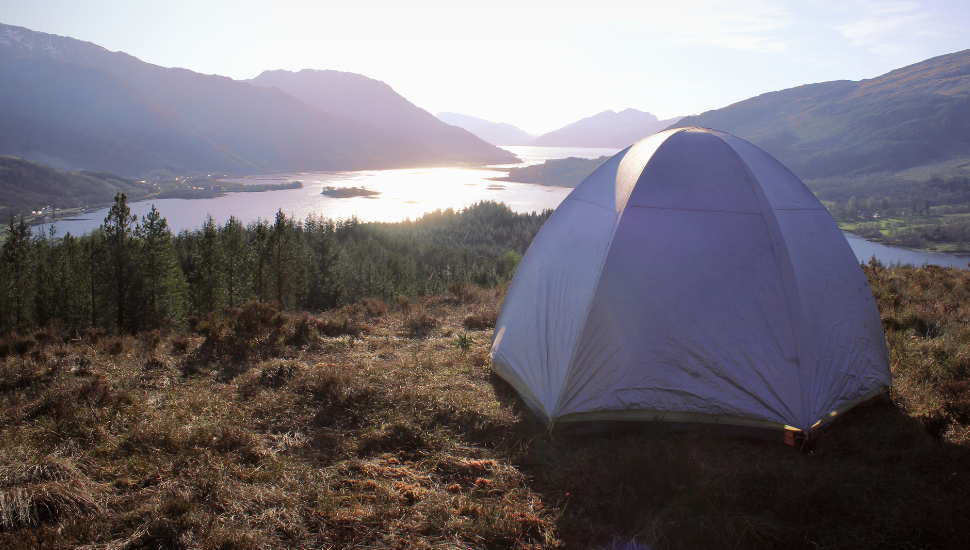
Wild camping
Wild camping is allowed across Scotland on unenclosed land, thanks to the Land Reform Act (2003). The related Outdoor Access Code asks visitors to use the land responsibly - which means taking home any litter, using stoves instead of lighting fires and staying for a maximum of three nights (among other reasonable requests).
Wild camping in other parts of the UK is generally not permitted, with a few exceptions, including parts of Dartmoor National Park in Devon.
Given the high cost of hotel accommodation, wild camping is a very economical solution for those on a budget.
Overnight parking in the Highlands is common but technically requires the permission/goodwill of the landowner.
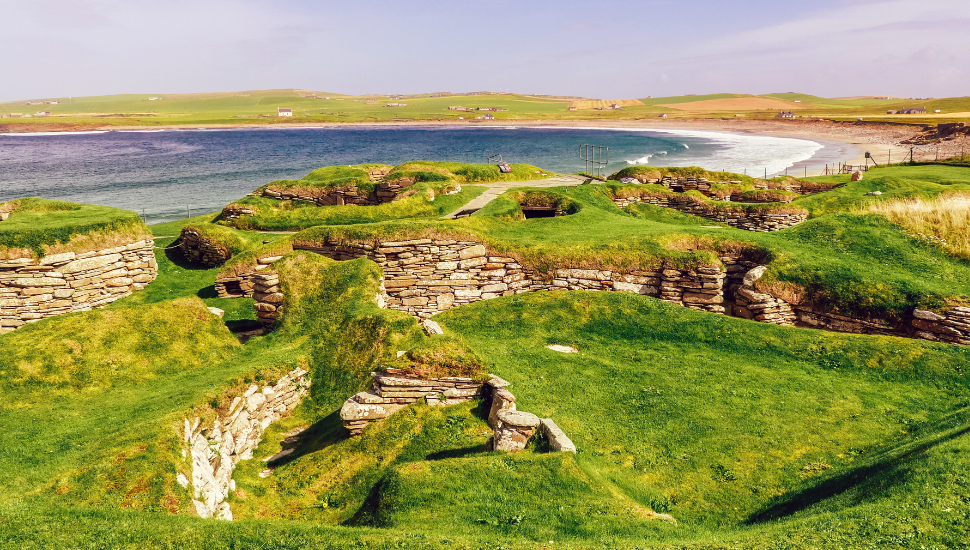
Best places in the Highlands
What follows is a list of top places to visit and things to do in the Highlands.
Skara Brae
Travel back to the Stone Age at this incredible Neolithic site, which predates both Stonehenge and the Pyramids.
Before exploring the 5,000-year-old ruins, you'll get to see a reconstructed house, which gives the rest of your tour more meaning.
Scara Brae was discovered in 1850 after a storm revealed the remnants of houses in the grass and sand. Since then, it’s been one of Scotland's most absorbing and popular historic attractions.
Tickets must be booked in advance and you must enter within the allocated time slot.
Maeshowe
Another must-see Neolithic site, Maeshowe is a vast sandstone tomb - but built for whom or what remains a mystery.
Feel the weight of 5,000 years of history as you pace through the chamber's stony passageway and view ancient rune graffiti on the walls, left there by Vikings seeking shelter from a storm. Alongside “Bjorn luvs Helga” kind of scrawls, there are also some impressive carvings of snakes and dragons.
Booking ahead is recommended.
Loch Ness and Urquhart Castle
Whether or not you’re onboard with the idea that a prehistoric water-beast has somehow survived its peers and is lurking in the depths of Loch Ness, this remains a beautiful spot to spend a few hours.
Don’t miss the iconic mediaeval Urquhart Castle, which overlooks the water, towards the north of the loch on the western bank.
This is one of the best places in the Highlands for lovers of lore and legend.

Eilean Donan Castle
Eilean Donan is arguably Scotland’s second most famous castle, after Edinburgh.
Perched on an islet linked to the banks of Loch Duich by a stone bridge, it is one of the most photographed spots in the entire country.
Inside is a sword used at the Battle of Culloden (1746), alongside a photo from Highlander (1986), which used the castle as a backdrop.
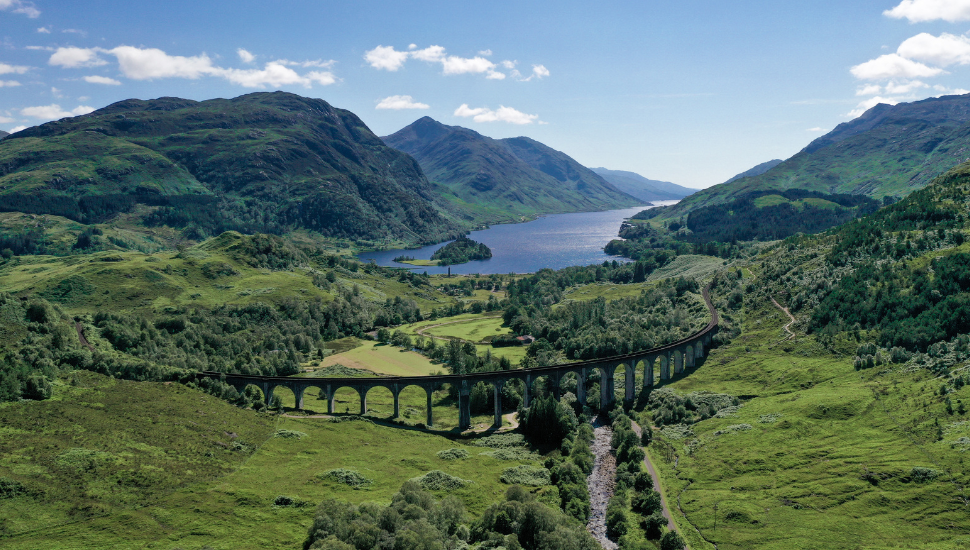
Glenfinnan Viaduct
This 21-arch railway viaduct was the centrepiece of the West Highland Railway, and was used to great effect in the Harry Potter films.
The museum offers up plenty of fascinating tidbits about the railway and the trouble they had building it.
Visiting Glenfinnan is considered one of the best places in the Highlands - particularly among Potter fans!
Fort William & Ben Nevis
The town of Fort William is set by the shores of Loch Linnhe, against one of the most dramatic settings in the country. Notwithstanding the underwhelming town centre and the noisy dual carriageway that passes through it, the town is a great base for exploring the nearby glens and hills.
Chief among these hills is Ben Nevis - which is actually a mountain. At 1,345m (4,413ft) it’s the UK’s loftiest peak. The early stage of the ascent is gradual and straightforward for those with basic fitness, but it gets increasingly steep and rocky as you rise. The most popular route starts on the east side of Glen Nevis, about 2km from Fort William.
Glencoe and the Three Sisters
In 1692, soldiers from the Campbell clan massacred the MacDonalds - and the bloodbath took place in Glencoe.
Today, Glencoe is at once peaceful and dramatic, with its famous Three Sisters - a trio of vast, brooding spurs that dominate the glen. Inarguably one of the most visually impressive driving routes in the UK, and indeed Europe.

The Isle of Skye
Soaring mountains, a truly wild coastline and ancient castles await you on Skye. Highlights include the Old Man of Storr, Quiraing and the Fairy Pools.
Set aside a few days for this remarkable island if you can - hiking here is among the most rewarding things to do in the Highlands.
Culloden Battlefield and Clava Cairns
Culloden was the site of the Jacobite Rebellion's final demise. Like many battlefields, today it’s just a pretty heather-covered field - but the Visitor Centre offers a stimulating and well-researched series of exhibitions, featuring lots of contemporaneous artefacts.
More interesting, perhaps, is Clava Cairns, a trio of well-preserved burial cairns dating back 4,000 years. The surrounding woods are also extremely pleasant.
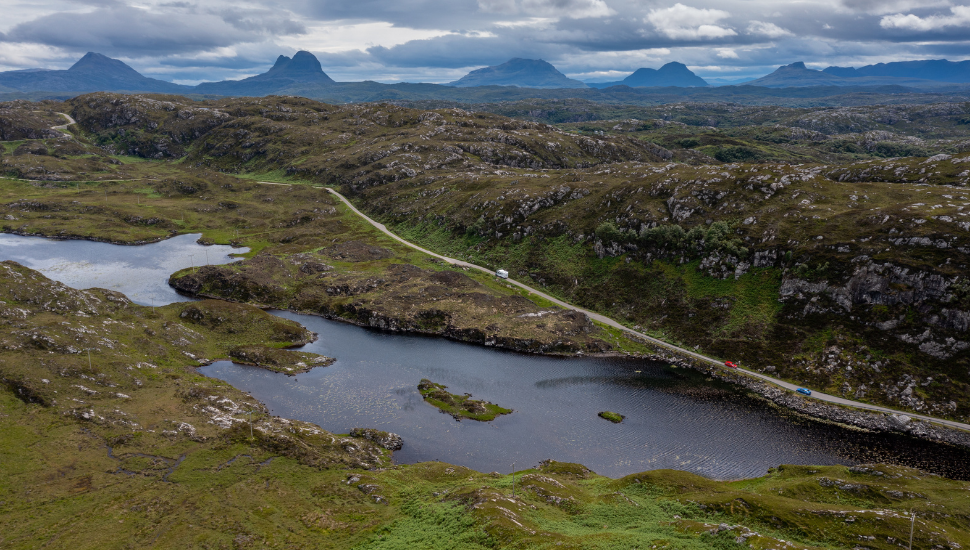
The North Coast 500
Venture into a realm that would get any Game of Thrones location scout excited.
Scotland’s very own Route 66 takes you along the coast past white-washed cottages streaked with rust, bypassing aristocratic residences like Dunrobin Castle, and allowing pit stops at wild locations like Whaligoe Steps - a flight of 350 stairs that descend to an old herring station.
As the crows wheel overhead against a (probably) leaden sky, you’ll reach John O'Groats, bleak yet beautiful, letting you know you’ve reached the very edge of Europe.
Get a Quote